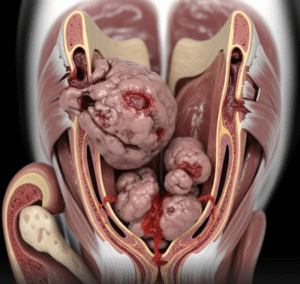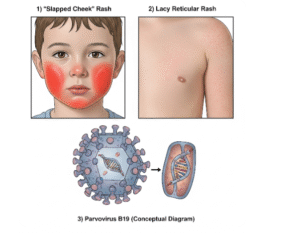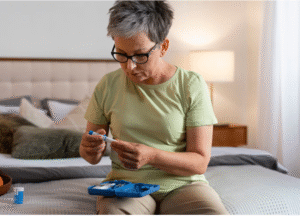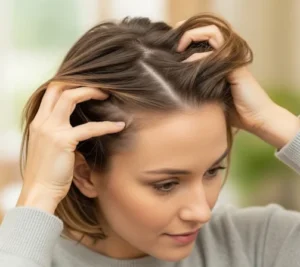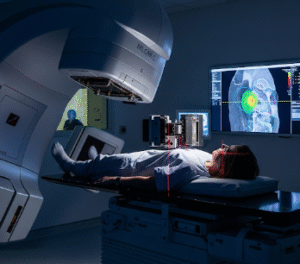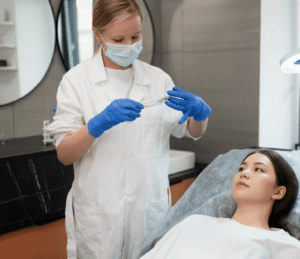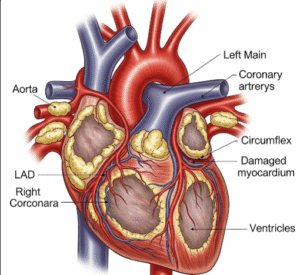What it is
➝ Ablative fractional laser-assisted drug delivery (LADD) is a treatment that combines ablative fractional lasers (such as CO₂ or Er:YAG) with the immediate application of topical medications or biologics.
➝ The laser creates microscopic treatment zones (MTZs) by vaporizing tiny columns of skin, leaving surrounding skin intact to promote rapid healing.
➝ These microchannels allow enhanced penetration of drugs directly into scar tissue, overcoming the skin barrier.
➝ In Korea, this approach is widely used in scar clinics and dermatology centers, especially for hypertrophic scars, keloids, burn scars, and acne scars, often as part of multimodal scar management.
Why it’s done
→ To improve scar texture, thickness, and pigmentation more effectively than laser or topical therapy alone.
→ To enhance drug delivery of agents such as corticosteroids, 5-fluorouracil, bleomycin, or growth factors into scar tissue.
→ To minimize the need for intralesional injections, which can be painful and lead to atrophy or pigmentation changes.
→ To accelerate healing by combining laser-induced remodeling with pharmacologic modulation.
→ In Korea, this method is valued for its dual cosmetic and medical benefits, offering smoother scar outcomes.
Alternatives
→ Conventional laser resurfacing without drug application.
→ Intralesional steroid or 5-FU injections: effective but painful and invasive.
→ Microneedling-assisted delivery: less precise penetration compared to fractional lasers.
→ Topical therapy alone: limited penetration into scar tissue.
→ Surgical excision or revision: sometimes necessary but with recurrence risk.
Preparation
→ Scar assessment: size, type (hypertrophic, keloid, atrophic), age of scar.
→ Pre-treatment cleansing and disinfection.
→ Application of topical anesthetic 30–60 minutes before ablative laser session.
→ In Korea, clinics often perform digital scar imaging and 3D skin analysis to monitor progress.
How it’s Done
→ An ablative fractional CO₂ or Er:YAG laser is applied to the scar at controlled depth and density to create microchannels.
→ Within minutes, the selected drug is applied topically over the treated area. Common agents include:
- Corticosteroids (triamcinolone, dexamethasone) for hypertrophic scars or keloids.
- 5-Fluorouracil (5-FU) or bleomycin for resistant keloids.
- Platelet-rich plasma (PRP), growth factors, or stem-cell extracts for atrophic or acne scars.
→ The drug penetrates through the laser channels into the dermis, achieving deeper and more even distribution.
→ Sessions are repeated every 4–6 weeks, typically requiring 3–6 sessions depending on scar severity.
→ In Korea, many clinics combine ablative LADD with silicone dressings, pressure therapy, or laser toning for optimal results.
Recovery
→ Downtime is usually 2–5 days, with redness, swelling, and micro-crusting.
→ Scars gradually soften, flatten, and fade over 2–3 months of therapy.
→ Patients often report improved comfort, reduced itching/pain, and better cosmetic appearance.
→ Combination therapy enhances long-term outcomes, especially for earlobe keloids, burn scars, and acne scars.
Complications
→ Post-inflammatory hyperpigmentation (PIH), especially in darker skin types.
→ Infection risk if post-care hygiene is poor.
→ Atrophy or hypopigmentation if corticosteroid delivery is excessive.
→ Temporary erythema and swelling, usually resolving in days.
Treatment Options in Korea
→ Korean dermatology and plastic surgery clinics are pioneers in using ablative fractional CO₂ and Er:YAG lasers for scar treatment.
→ Customized drug delivery protocols are common, tailoring laser settings and drug choice to scar type.
→ Clinics frequently combine ablative LADD with intralesional injections, alternating treatments for enhanced outcomes.
→ For burn scars, Korean hospitals often use ablative LADD with PRP or growth factor serums to promote remodeling and elasticity.
→ For acne scars, fractional CO₂ LADD with regenerative serums or stem-cell extracts is a popular option in aesthetic dermatology.


